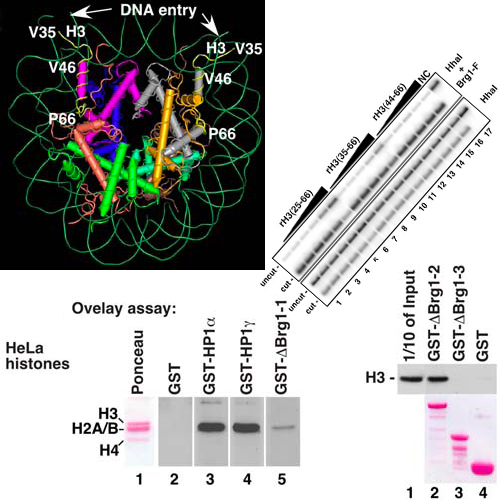Interaction of HP1 and Brg1/Brm with the Globular Domain of Histone H3 Is Required for HP1-Mediated Repression
11-Dec-2009
The heterochromatin-enriched HP1 proteins play a critical role in regulation of transcription. These proteins contain two related domains known as the chromo- and the chromoshadow-domain. The chromo-domain binds histone H3 tails methylated on lysine 9. However, in vivo and in vitro experiments have shown that the affinity of HP1 proteins to native methylated chromatin is relatively poor and that the opening of chromatin occurring during DNA replication facilitates their binding to nucleosomes. These observations prompted us to investigate whether HP1 proteins have additional histone binding activities, envisioning also affinity for regions potentially occluded by the nucleosome structure. We find that the chromoshadow-domain interacts with histone H3 in a region located partially inside the nucleosomal barrel at the entry/exit point of the nucleosome. Interestingly, this region is also contacted by the catalytic subunits of the human SWI/SNF complex. In vitro, efficient SWI/SNF remodeling requires this contact and is inhibited in the presence of HP1 proteins. The antagonism between SWI/SNF and HP1 proteins is also observed in vivo on a series of interferon-regulated genes. Finally, we show that SWI/SNF activity favors loading of HP1 proteins to chromatin both in vivo and in vitro. Altogether, our data suggest that HP1 chromoshadow-domains can benefit from the opening of nucleosomal structures to bind chromatin and that HP1 proteins use this property to detect and arrest unwanted chromatin remodeling.











